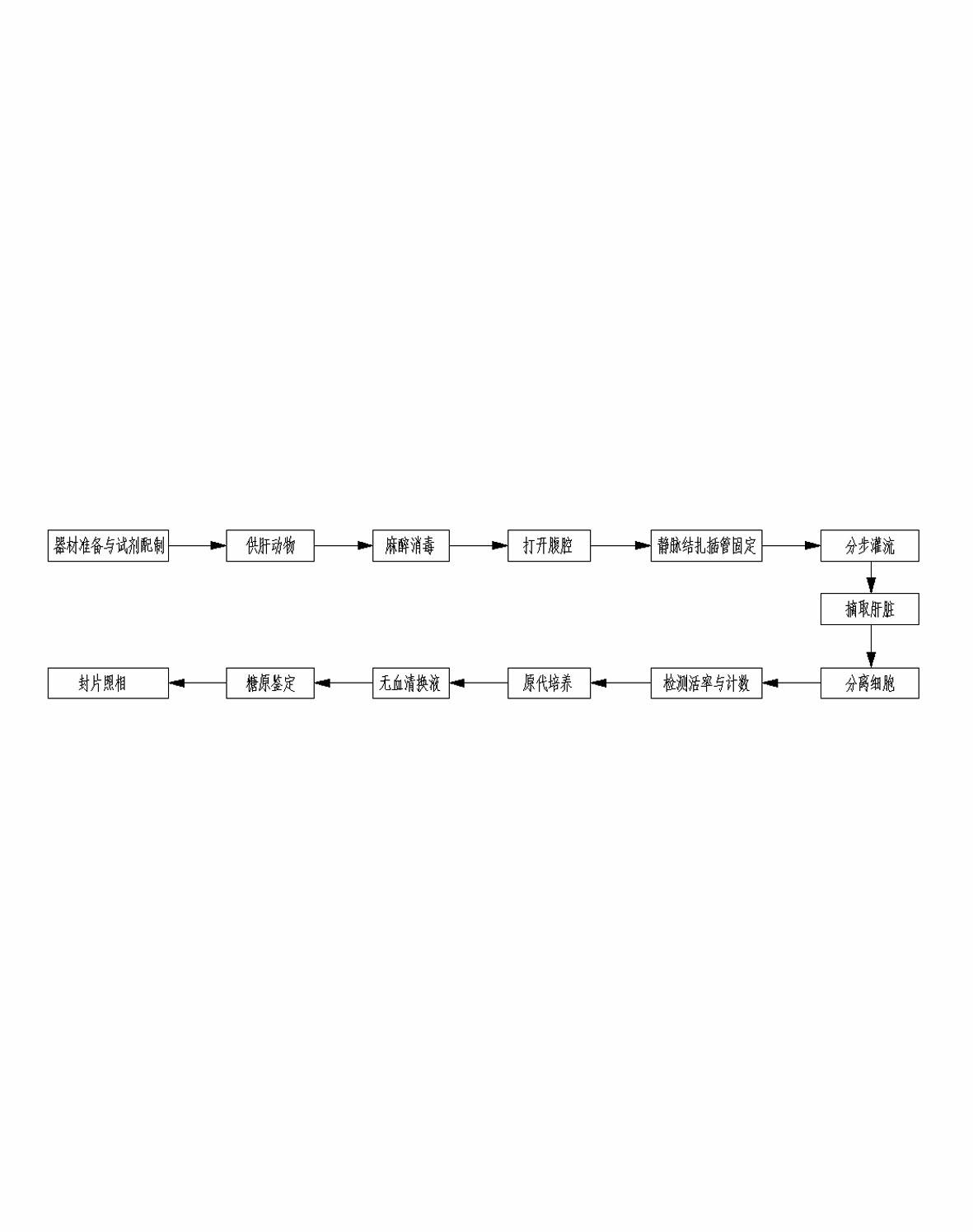Method for separating, culturing and identifying primary hepatic cells of livestock and fowl
A primary liver cell, livestock and poultry technology, applied in the biological field, can solve the problems of low vitality, low yield and purity of primary liver cells, cumbersome process, etc., and achieve less damage, easy adhesion, and good activity Effect
- Summary
- Abstract
- Description
- Claims
- Application Information
AI Technical Summary
Problems solved by technology
Method used
Image
Examples
Embodiment 1
[0057] 1. Isolation and purification of piglet liver cells
[0058] Select 1 7-day-old healthy Landrace piglet, drink water ad libitum and fast overnight before operation, intraperitoneally inject pentobarbital sodium (50mg / kg) for anesthesia;
[0059] Use gauze soaked in 75% alcohol to wipe the whole body of the piglet, place the anesthetized piglet in the supine position on the small animal operating table (the operating table is placed on a large porcelain plate), and transfer it to the ultra-clean workbench;
[0060] Open the abdominal cavity under aseptic conditions, gently pull the intestinal tract to the right side of the body, expose the mesenteric vein, moderately ligate both ends of the inferior vena cava, and insert a cannula in the direction of the hepatic portal vein (the part of the infusion tube that removes the needle bluntly). The cannula is then tied tightly to the vein to create access;
[0061] Perform perfusion separation: the first step is pe...
Embodiment 2
[0079] 1. Isolation and purification of chicken primary hepatocytes
[0080] Select 1 healthy young Lingnan yellow chicken, fast for 3 hours before operation, inject 1750IU / kg dose of heparin sodium into the wing vein for anticoagulation, and intraperitoneally inject pentobarbital sodium (50mg / kg) to anesthetize the animal;
[0081] Place the anesthetized chicken in the supine position on the small animal operating table (the operating table is placed on a large porcelain plate), wipe the whole body of the chicken with 75% alcohol, transfer it to the ultra-clean workbench, open the abdominal cavity under aseptic conditions, and gently The bowel is pulled to the left side of the body to expose the mesenteric veins, one of the retromesenteric veins that directly flows into the hepatic portal vein is cannulated (No. 5 scalp needle removes the needle), and the other vein that flows to the liver is ligated;
[0082] The first step is perfusion before digestion, which is di...
PUM
 Login to View More
Login to View More Abstract
Description
Claims
Application Information
 Login to View More
Login to View More - R&D
- Intellectual Property
- Life Sciences
- Materials
- Tech Scout
- Unparalleled Data Quality
- Higher Quality Content
- 60% Fewer Hallucinations
Browse by: Latest US Patents, China's latest patents, Technical Efficacy Thesaurus, Application Domain, Technology Topic, Popular Technical Reports.
© 2025 PatSnap. All rights reserved.Legal|Privacy policy|Modern Slavery Act Transparency Statement|Sitemap|About US| Contact US: help@patsnap.com


